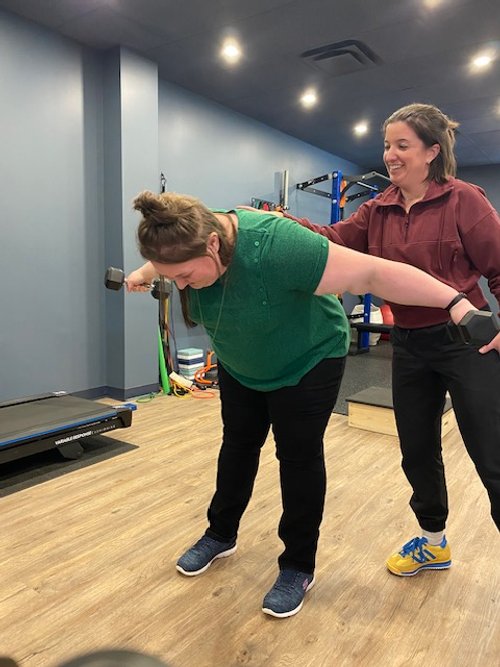Get the Most Out of Your Exercises
The Power of Smart Cueing
When you’re working with a physiotherapist, you’ll be given exercises to support your recovery and help you move better. Along with these exercises, you’ll often hear specific instructions— called cues—to guide how you do each movement. Some of these cues might sound unusual or even a little silly, like “squeeze a penny between your butt cheeks” or “stick your butt out like you’re closing a car door.” While they might make you smile, there’s a smart reason behind them. Let’s take a closer look at why we use these types of cues and how they can help you move more effectively.
Internal vs. External Cues
There are two main types of cues:
Internal cues focus on what’s happening inside your body. Example: “Squeeze your glutes” or “Engage your core.”
External cues focus on something outside your body—like a direction, an image, or part of your environment. Example: “Push the floor away” or “Reach towards the ceiling.”
Why External Cues Work Better While internal cues ask you to think about specific muscles or body parts, external cues help your body move more naturally without overthinking. Research shows that focusing outside your body helps you move more smoothly and efficiently—whether you’re just starting out or you're a seasoned athlete.
When you focus too much on what your body is doing (internal focus), it can get in the way of your movement. That’s because your brain works harder to figure things out, which can interrupt the flow of the movement.
On the other hand, when you focus on an external action—like “pushing the weight toward the ceiling”—your brain organizes the movement in a more automatic and natural way. The result? Better, easier, and more effective movement.
So, Why the Funny Phrases?
When your physiotherapist says something like “squeeze a pencil between your shoulder blades” or “pretend you're closing a car door with your butt,” they’re using an external cue to help you move correctly without needing to overthink it. These kinds of visual or action-based instructions are easier for your brain to follow and usually lead to better movement outcomes.
Quick Recap
External cues = Focus on the action or environment → Less thinking, smoother movement
Internal cues = Focus on muscles or body parts → More thinking, can slow you down
Bottom Line: If your physio gives you a cue that sounds a little weird or silly, go with it! There’s solid science behind it, and it’s all about helping your body move in the most natural, efficient way possible.
Maria Manzon Barteau, BKinH, MScPT
References
Wulf, G (2007). Attention and Motor Skill Learning. Champaign III: Human Kinetics
Jeffreys, I (2010) Providing Effective Feedback and Instruction – Internal Versus External Focus. Professional Strength and Conditioning. 20: 30-32.
Alena Luciani, The School of Training2XL: Coaching Foundations SCHOOL OF TRAINING2XL — Training2XL

